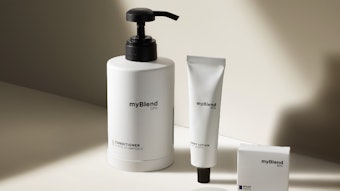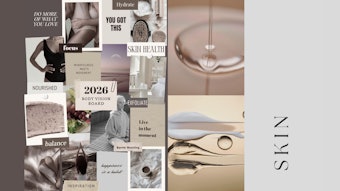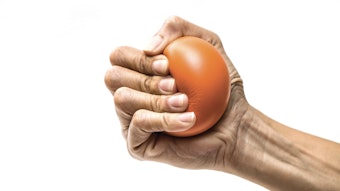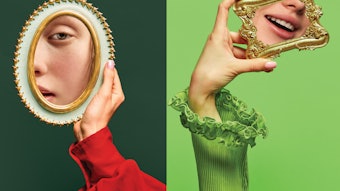
What is a well death, you may be wondering? You are about to find out, as the Global Wellness Summit announced its top picks for 2019 wellness trends. The following eight trends were announced at its press event on Jan. 28, 2019, at Hearst Tower in NYC.
1. Well Fashion
You may not realize this, but overconsumption of clothes can have a negative environmental impact. Similarly, the fashion production process often emits a great deal of greenhouse gas emissions. The GWS highlighted how clothes/shoes are designed, made, acquired, cared for, experienced and disposed of has to be fixed and that 2019 will be the pivotal year for change. So, what does well fashion look like? It is clothing made of sustainable textiles, or vegan fashion made from alternatives to fur or leather. It is ethical transparency of brands who celebrate those that craft their garments or brands rewarding customers for bringing their unwanted garments back.
Also on the horizon of well fashion are clothes that promote your well-being, whether they improve sleep, reduce wrinkles or regulate body temperature.
2. Wellness Takes on Overtourism
International travel is exploding, and as a result, popular destinations are being overwhelmed with tourism. The damage to those destinations’ infrastructure and environment (and to their residents’ lives) is a terrible wellness issue. Wellness tourism will be one key antidote: Not only are the majority of wellness resorts, by nature, in nature (off the crowded, beaten path) but now a growing number of national tourism boards are smartly launching initiatives to combat overtourism (and reduce seasonality) by developing new wellness destinations.
As cities get bombarded by tourists, more travelers will crave healing, serene oases in metropolises, so another major trend is the rise of the urban wellness resort. Some of the world’s top wellness travel brands are moving beyond their roots in idyllic locations to set up shop in big cities. The first One&Only Urban Resorts will soon open in Dubai, a “well” challenge to what a city hotel could be; famed Balinese wellness resort Fivelements will launch a creative urban wellness retreat in Hong Kong this year. Six Senses opens in NYC in 2020, where its first Six Senses Place will offer a dizzying menu of beyond-cutting-edge wellness approaches.
3. Meditation Goes Plural
Meditation will evolve from a singular to a plural practice, from a generic concept to understanding specific types and their unique brain impacts, just as this explosive market blooms into many varieties. After years of talk, now people are actually doing it (i.e., it’s the fastest-growing health trend in the US). But the growth in people practicing has been matched by profound confusion around the very concepts of “meditation” and “mindfulness” (which also infects medical studies): They get used interchangeably when the research shows that, while there are hundreds of meditation breeds, there are three core types/mechanisms: 1) focused attention (clearing the mind of thoughts), 2) open monitoring (which includes mindfulness meditation), and 3) self-transcending (involving silent mantras).
The future? It’s not either/or it’s yes/and—as meditation becomes a plural toolbox for mental wellness. Meditation will “go plural” in a whole other way. If you used to take that “meditation class,” now ancient and modern varieties will multiply in 2019—whether straight-out-of-Europe sophrology (marrying Eastern meditation practices with Western relaxation concepts) or Kundalini yoga (an ancient, spiritual mash-up of chanted mantra, breathing techniques and movement). “Mindful fitness” brands will surge, where you move with intention or where workouts work in meditation sessions—just as mindful spa experiences will get more creative. More mindful apps and new drop-in meditation studios and wellness centers/clubs (all booming) will become one-stop shops with jaw-droppingly full meditation menus. A flurry of “meditation technologies” will boost—as well as hack—the meditation experience, using tech-like biofeedback, EEG/brain wave tracking and transcranial direct current stimulation.
4. Prescribing Nature
Nature Deficit Disorder has taken hold, and it’s real—this 24/7, digitally dominated, Instagram-able world is depriving humankind of some very basic, very important nourishment that comes from being outdoors. As people continue to be overworked and overwrought, they will answer the call of nature, so to speak. And it’s a call that comes from deep within, according to scientists who have been studying this. Our bodies—and our minds—need nature. And as more evidence becomes available in mainstream media, more people will seek this “treatment,” and more physicians will be prescribing it. And the price is right, as it doesn’t cost anything to take a walk outside.
Beyond formal nature prescriptions, this trend also spans a serious “back to nature” shift happening across the wellness world, from the rise of “green exercise” (in-nature workouts) offered at more fitness studios, to the continued surge in bringing nature and biophilic design into our homes, schools, offices and hospitals to the nonstop growth in forest bathing programs at wellness travel destinations.
5. MediScent
Evidence-based studies around scent’s powerful impact on our physical and emotional wellbeing are being released fast and furiously. At the same time, new aromas are being discovered, including Glossier You’s personalized perfumes to enhance your own skin’s scent. New scent-based applications and products are being announced, such as Aeroscena’s gel pods diffusers that are used not only for feel good, functional scents in homes and offices but are also being tested as alternatives to pharmaceuticals in medical trials.
And there is much innovation in how we harness the power of scent, such as Scentee’s smart diffuser that lets you change up scents from your smartphone. There are candles and oils to evoke a precise sense of place (to trigger positive memories) and scents used as mental wellness supplements (Nue Co. is marketing an anti-stress supplement as fragrance). Art installations, such as Jean-Marc Chaillan’s Mood Cloud, are exploring the not too far-fetched concept of melding wellness with big data, using microsensors that measure stress levels and showering calming aromas over stressed-out parts of a city. There’s simply ever more research that scent impacts cognitive health, such as the discovery that tasting and smelling wine works the brain harder than a math problem. Scent is being used as no-cal flavoring (SZENT is already selling water flavored with fragrance); restaurants are creating scent-based menus; and luxury hotels, including a recently opened Fendi hotel in Rome, are empowering guests to personalize their room’s aroma from a scent menu.
As studies show that smell registers in our brains first—before sight, sound or touch—more marketers are employing scent to make us spend more time and money, while all kinds of product designers are focusing on scent as they bring new products to market. NanoScent, an Israel-based start-up, is trying to turn our smartphones into “scent catchers” and has developed a matchmaking app that uses scent to help identify suitable mates (based on the same technology that detects breast cancer by recognizing changes in the tissue’s smell). We expect that the neuroscience of scent will become more pervasive in everything we do, and fragrances will be used in ways we would never have dreamed of—both in public and personal spaces.
6. Chinese Wellness
China’s outbound travel growth has expanded 20-fold since 2000—now at 145 million international trips annually, to rise to 200 million in two years, and then doubling to 400 million by 2030 (when China will represent 30% of the entire international travel market). Chinese tourists will rewrite the wellness travel market: They’re now rejecting the old shopping/sightseeing tours to embrace authentic cultural and wellness experiences.
The country is also facing a health crisis—from an unsupported aging population to ballooning obesity rates—and the government has launched a super-ambitious “Healthy China 2030” initiative with wellness targets such as having 530 million more people take part in regular exercise. China is undergoing a wellness (and beauty) revolution. Over 70% of its middle class exercise regularly and purchase organic food, 104 million Chinese have at least one fitness app on their phones, and China accounts for 41% of all global cosmetic procedures.
With overpopulation and record-high pollution, the wellness real estate market is booming (now 2nd globally) with amazing projects, such as Liuzhou Forest City with its smog-eating facades covered by nearly 40,000 trees. The wellness boom in China is being driven by forces like the roaring “she-conomy” (incredible growth in women’s spending power) and the fact that so many more Chinese are now seeking their authentic roots and a spiritual purpose in life.
China’s indigenous wellness traditions and unique destinations will increasingly grab the world’s attention, from new, authentic wellness travel destinations to its 425,000 TCM practitioners to its Buddhist and Taoist spiritual cuisine. Wellness hospitality leaders like Alila, Aman, Banyan Tree and Six Senses have recently launched sophisticated, authentic wellness resorts in China, such as Amanyangyun near Shanghai, a vast wellness destination with a unique focus on ancient Chinese culture and holistic healing.
7. Personalized Nutrition
Enter the age of personalized nutrition where science, low-cost medical testing and new technologies identify what foods are right just for us—not only for weight management but, more importantly, to boost overall health and wellbeing. This includes companies such as Habit and Nutrigenomix, which rely on blood and DNA analyses to specify what foods are right for you. Or companies such as Baze that focus solely on helping individuals meet their personal nutritional needs (appealing to specific food tribe members who are worried they aren’t getting all the right nutrients) by providing supplements based on blood work conducted every three months. The newly launched Onegevity Health adds microbiome analysis to the mix and promises to deliver personalized products and services that support skin health, cognition, heart health and sports performance.
New devices, such as Lumen, which uses your CO2 to measure how you’re burning fuel and suggests which foods you should eat, are now available to help you understand exactly which nutrients your body needs. AI-powered apps, such as Pinto and Calorie Mama, let you know what exact nutrients and calories are sitting on the plate in front of you. As “one-size-fits-all” health and wellness practices fall by the wayside and the understanding of epigenetics—the study of how our genes are shaped by our behavior—grows, personalized nutrition will hit the mainstream in increasingly surprising ways, such as Gatorade’s chip-enabled skin patch that measures hydration so its drinks can deliver exactly what that athlete needs.
8. Dying Well
Until the early 20th century, people died at home surrounded by loved ones. Western medicine has since made it a coldly clinical affair in a hospital or nursing home. The funeral industry then co-opted the management of our dead, and with a decline in formal religion, healing communal rituals got lost. And two very modern forces are complicit in exacerbating the death-denial problem: a Silicon Valley biotech industry that aims to “cure death” and radically extend life—and the wellness market itself, with its endless don’t-age, never-die messages.
But suddenly a “death positive” movement is here with everything around death and dying getting rethought through a more “well” lens: from making the dying process more humane to the radical reinvention of the memorial and funeral to active death exploration/acceptance practices becoming part of a mentally healthy life. Death doulas, wellness practitioners that fill that yawning gap in care between medicine and hospice, families and fear—and who are dedicated to delivering better, more meaningful and peaceful deaths—are gaining serious traction around the world. With rising evidence for psychedelic magic mushrooms’ power to relieve the emotional distresses of those facing end-of-life, psilocybin looks to be a bigger part of the future “dying well” toolbox (and researchers predict it could become legal medicine in five years).
Funerals are becoming less gloomily formal, fixed and funereal and more deeply personal: from the rise of celebratory “living funerals” to the return of the creative home funeral. As people become aware of how environmentally toxic traditional embalmment, burial and cremation is, we’re seeing some seriously out-of-the-box, eco-friendly “burial” options: from mushroom burial suits lined with flesh-eating fungi that speed your return to nature to biodegradable burial egg-pods where your body/ashes grow the tree you most want to become.
Research shows that denying death can cause serious mental issues, so more people are actively exploring death as a wellness practice, and many more online platforms, classes, festivals and events are meeting the hunger to just talk about it, such as “death cafes” now held in 64 countries. More people are exploring alternative wisdom and practices around death from cultures worldwide, whether guided death meditations at Zen Buddhist centers or studying the ancient Roman Stoics’ death acceptance techniques (the Stoics are really trending now) or just downloading the WeCroak app, pinging you five times daily with Tibetan meditations reminding you that you will die. People are even traveling to have the caring and spiritual death they seek. There’s more positive movement around death and dying in the last few years than in the last 150. The future: a “better death” becomes an integral part of a “well life.”










